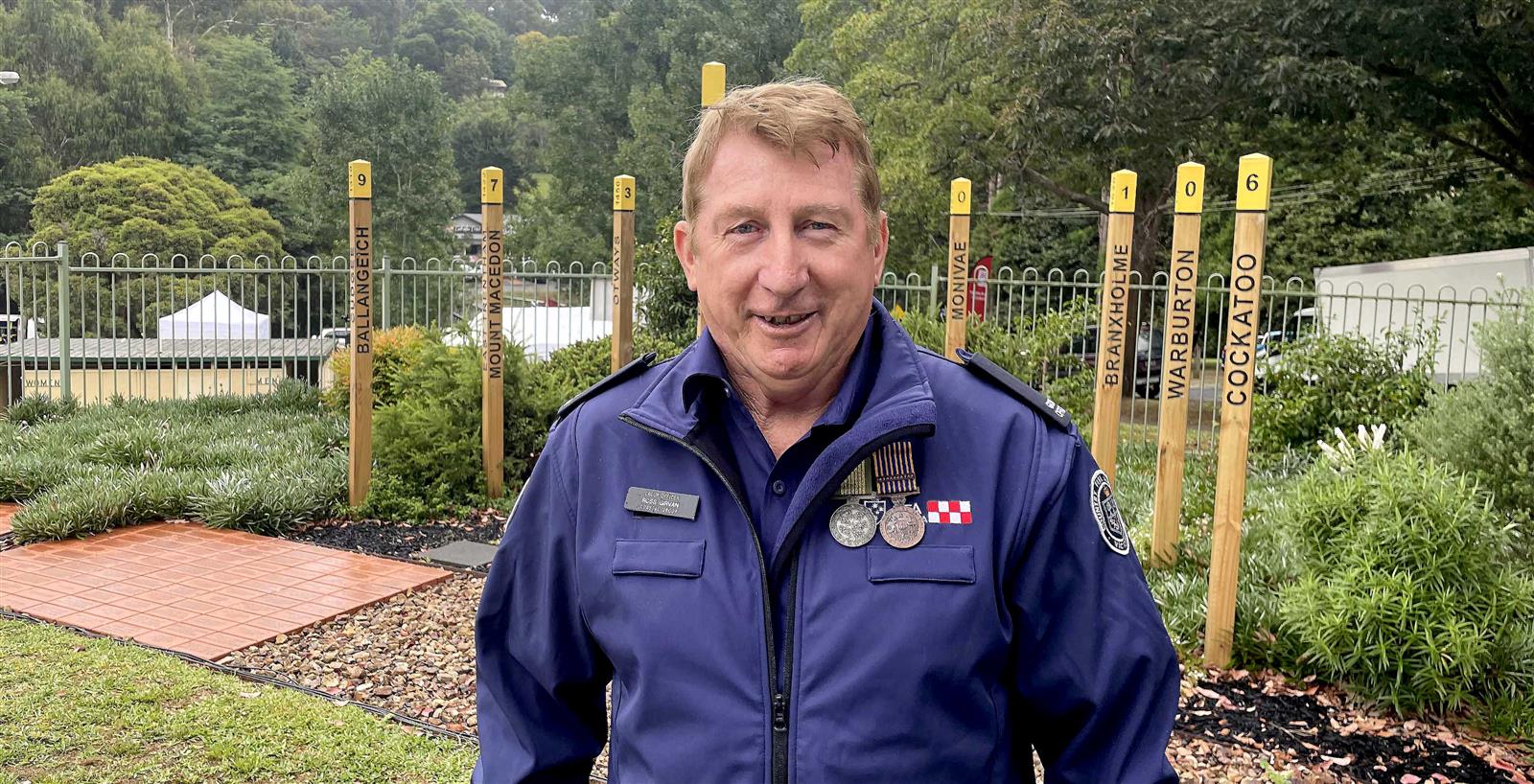 Ross Girvan at the Ash Wednesday Bushfire Education Centre in Cockatoo
Ross Girvan at the Ash Wednesday Bushfire Education Centre in Cockatoo
As the force of the wind ripped the tin roofs off houses and unleashed projectiles of embers, debris and gravel with ferocity, Aireys Inlet firefighter Ross Girvan and his fellow crew members could do little more than hunker down in their truck’s footwell and wait.
It was 16 February 1983. The day would come to be known as Ash Wednesday, one of the most significant bushfire events in Australian history.
“The hills were on fire. The wind was so intense the tin roofs were peeling off houses like sardine lids and flying through the air,” Ross recalled.
“The risk of being killed or injured by the flying debris and ember attack when we got out of the truck was just too high.”
Ross, then 22 years old, had been a CFA volunteer for four years at the time of Ash Wednesday. He was working at the local water authority with Anglesea Fire Brigade Captain Bill Bubb who he had met two years prior.
“Even back then Bill was very knowledgeable and experienced in fire behaviour, local weather and the history of fires,” Ross said.
“A lot of work we did for the water authority was out on the land, around the dams and in the bush, and Bill would pass on his knowledge. He taught me a lot about fire and fire behaviour around our coastal communities while we were out on jobs.
“We had experienced significant dust storms and fire weather in the lead-up – things were very dry due to the long-running drought.
“On 16 February it was very hot and windy early. Bill and I were out on a job and it became too hot to work. I remember saying, ‘I really hope we don’t get a fire today’.”
The pair downed tools and Bill headed for Anglesea station to get some respite from the heat. They would meet up again later that day at the Otways fire along the Great Ocean Road, where Bill would be the strike team leader of responding trucks from the area.
“At about 3pm a fire started in Deans Marsh,” Ross said. “It didn’t take long for the column of smoke to build and drift across the ocean from Lorne.
“I headed to my station and was directed to go to Lorne on our truck with a second truck and crew from Anglesea.
“We headed up the Great Ocean Road and got as far as Cathedral Rock about 10 minutes out of Lorne before we had to stop and turn back.
“The fire had moved so fast. Only moments before we were looking at a column of smoke miles away and now we were in the middle of an ember storm.
“Above us on the hills we could see spot fires starting.”
Ross said the force of the wind was brutal, making the ember attacks indefensible.
“With the vegetation so dry and the wind, there was no way to stop the spot fires from taking off,” Ross said. “A couple of holiday houses on the hills caught fire and there was nothing we could do.
“We reported back on the radio and Bill directed us to come back to the staging area at Eastern View. We waited there to see what the weather would do and make an assessment of our next steps.”

Then the wind changed, swinging from a north-westerly to a south-westerly.
Crews retreated to Moggs Creek about five kilometres away so they could further assess the situation.
“We were putting out as many spot fires around houses as we could as we travelled but the wind was getting stronger and stronger; it was up around 140 kilometres an hour at that point,” Ross recalled.
“We were thinking the wind would do what it normally does and die out. We knew that if that happened we could attack the fire more safely.”
The crews waited at Moggs Creek until the embers started falling there before moving back to a group of shops at Aireys Inlet.
“It soon became too dangerous to even get out of the trucks,” Ross said.
“Pieces of iron were flying everywhere, wrapping around the tops of the tall trees like aluminium foil. The roar of the wind ripping the iron off the houses sounded like a jet engine.
"Some trees were toppling over with the sheer force.
“It became too dangerous to even get out of the trucks. The gravel in the carpark of the shops was getting ripped up in the wind and adding to the projectiles coming at us.
“We just weren’t winning. At that point all we could do was look after ourselves and each other and duck for cover.”
Ross and his fellow members took shelter in the footwell of the trucks to wait out the worst of the fire and wind storm.
“That cabin and the floor of the Aireys Inlet truck was my best friend in that moment,” Ross said.
“The smoke from the fire had blocked out any sunlight so we had no idea what time it was or how long we were hunkered down, but it felt like an eternity.
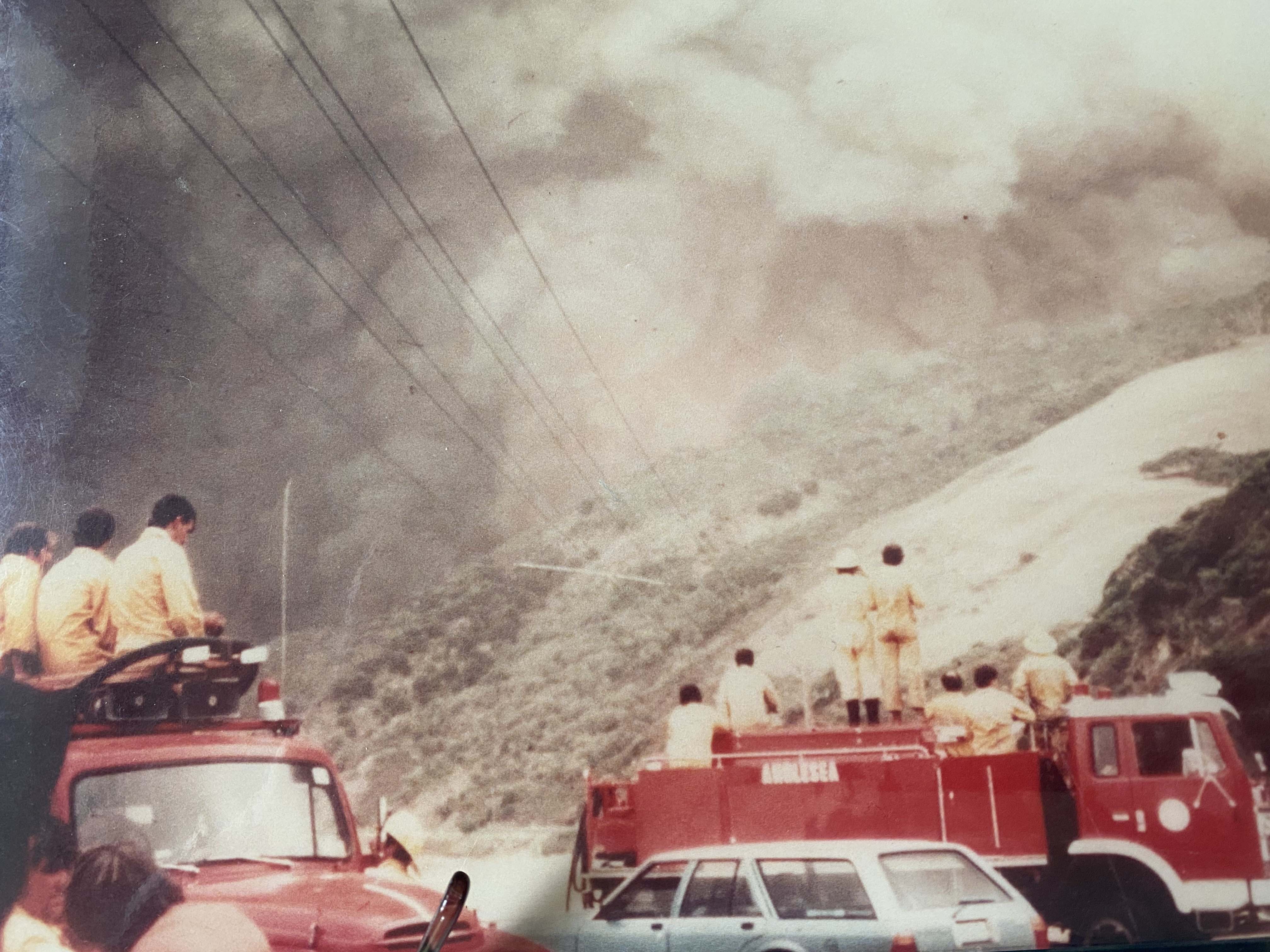
“After the main threat passed, Bill made the call to get the crews to Anglesea.
“We managed to get the Aireys Inlet truck started and got a couple of kilometres up the road to Urquhart Bluff before the petrol began vaporising in the truck in the intense heat. The truck then stalled and we couldn’t get it going.
“We pulled up in the carpark and a local in a 4WD took us down onto the beach. We sat watching the fire come through the hills with about 50 to 60 community members.
“A few hours later it was safe to head back up to the road. Miraculously we were able to get the truck going and we headed back into Aireys Inlet to assess the damage.”
Crews would find that Aireys Inlet had been lost. The fire would go on to take Anglesea. The Otways Fire on Ash Wednesday claimed three lives and 700 houses were lost.
They would spend the next few days controlling a peat fire at Anglesea and working with the water authority to restore water to the town.
“When we got back to town that evening, we were walking around to check homes and see who was still around,” Ross said.
“To see the effect it had on people, those who had lost everything was so hard; it was the saddest part because we all knew each other.
“I will never forget this older couple we came across after the fire came through. They made the decision to stay rather than evacuate their property.
“They told us how they sat in their bed drinking from a flagon of sherry as they watched the fire storm go past.
“Unlike so many others, their home survived.”
Ross joined Aireys Inlet Fire Brigade in 1979 as a plucky 18-year-old at the behest of local members. He has volunteered with the brigade for 40 years and has held several roles during this time including Equipment Officer, Lieutenant and Captain. He is also Group Officer for Coastal Group and works in CFA’s Vegetation Management team as a Risk Landscape Coordinator.
Thursday 16 February 2023 marks the 40-year anniversary of Ash Wednesday.
More than 180 fires occurred on that day in 1983, including eight major blazes in many towns and regional communities across the state. It is estimated more than 16,000 firefighters battled the fires which claimed the lives of 47 Victorians.
The Ash Wednesday 40th Anniversary Commemorative Event was held at the Ash Wednesday Bushfire Education Centre in Cockatoo on Sunday 12 February to commemorate this tragic event.
You can watch the commemorative event on CFA's YouTube channel.
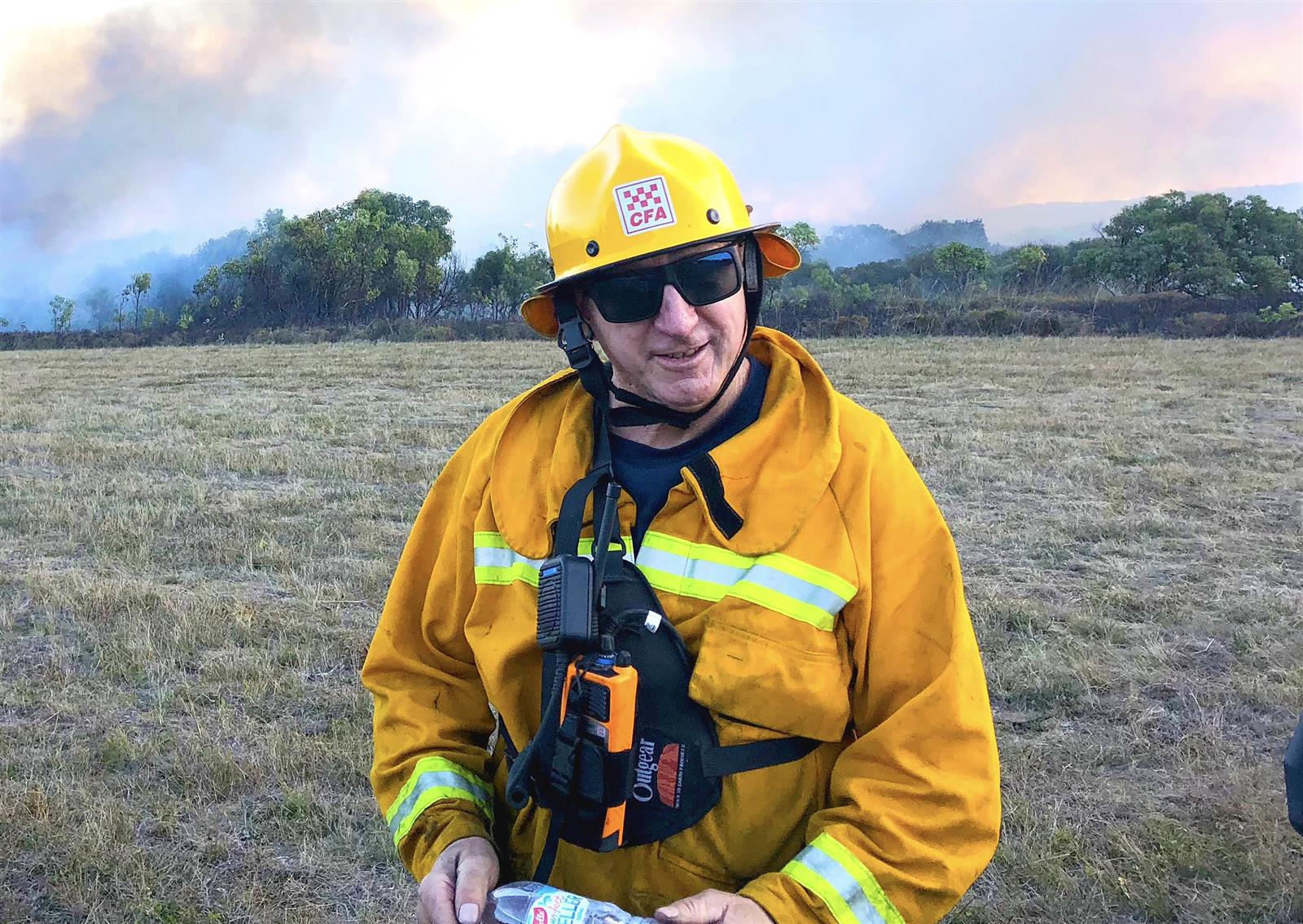 Ross is the Group Officer for Coastal Group
Ross is the Group Officer for Coastal Group-
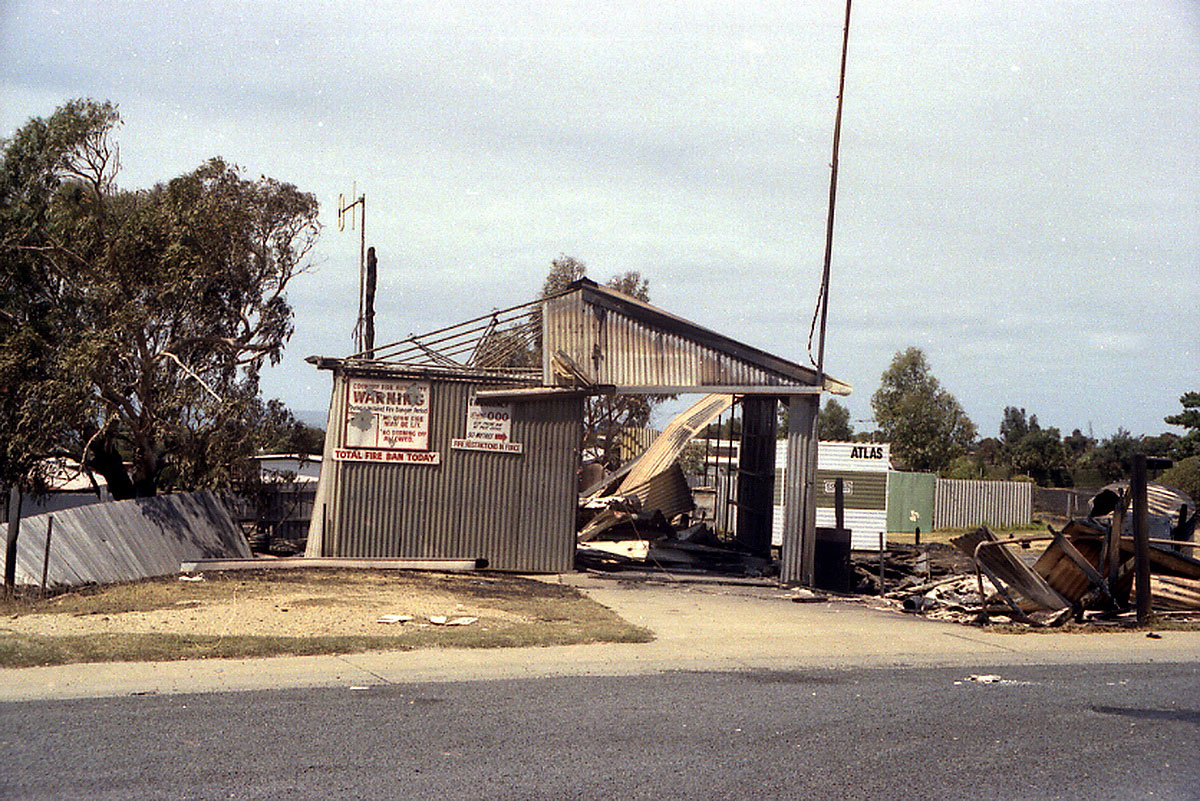 The Aireys Inlet station after the fire came through
The Aireys Inlet station after the fire came through
-
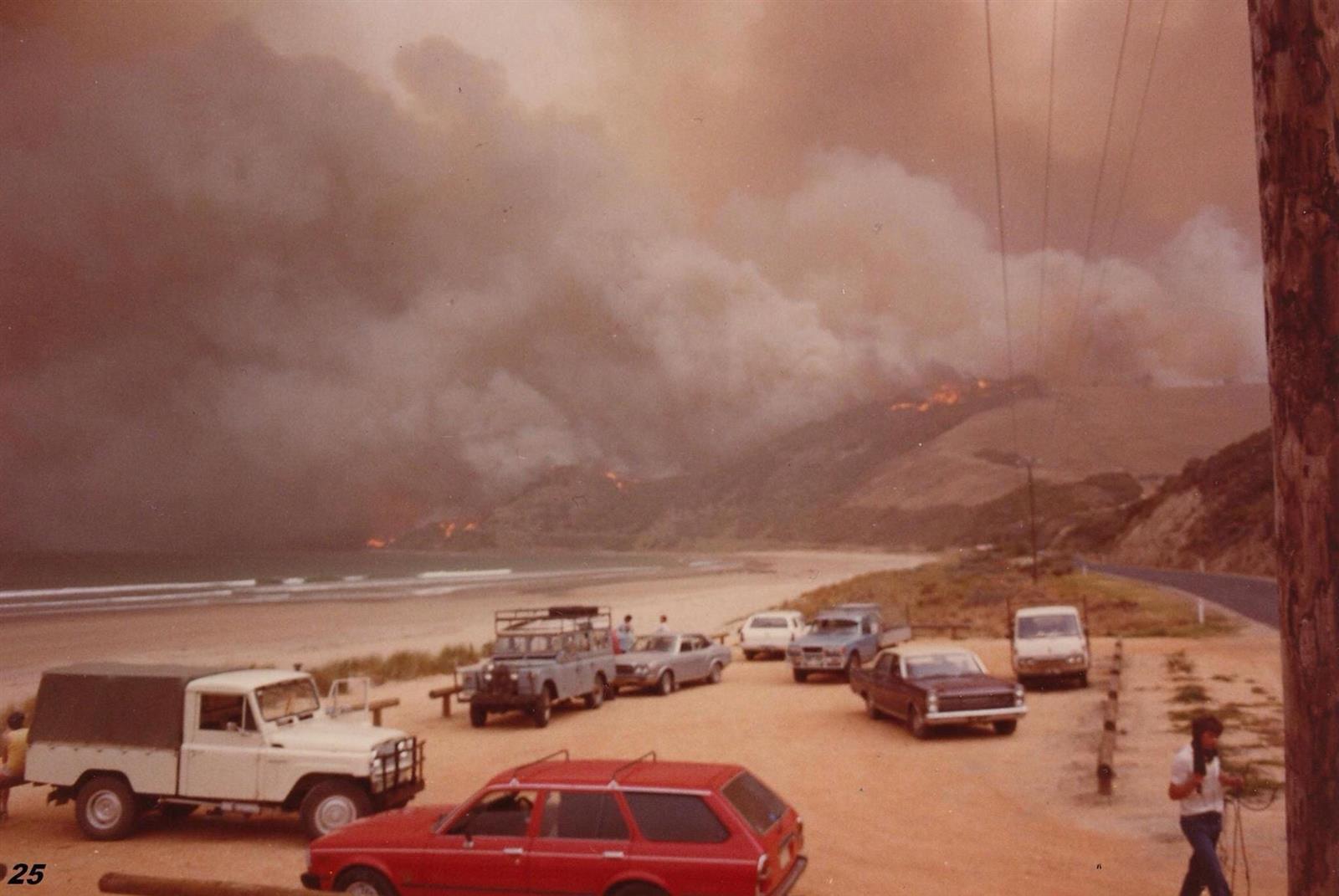 6.25pm just 10 minutes before the wind change. Photo by Tim Fitzgerald
6.25pm just 10 minutes before the wind change. Photo by Tim Fitzgerald
-
-
| Submitted by |
Shaunnagh O'Loughlin |